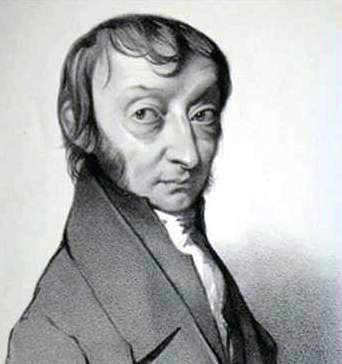
 |
The count of Quaregna and Cerreto Filippo Avogadro (at that time president of the Savoy State's senate) started off Lorenzo Romano Amedeo Carlo (born in Turin on the 9 August 1776), since a youth excellent student, on the juridical career: he achieved in Turin the graduation in jurisprudence in 1795 and the degree of doctor in ecclesiastic law in 1796. Only afterwards he started to devote himself, still holding some sundry juridical-administrative offices, to the study of the dearest physical and mathematical sciences following for some years courses of the physicist A.M. Vassalli-Eandi (1761-1825). In 1806 he was entrusted with the task of physical coach in the Provinces Royal College and in 1809 the task of teacher of positive philosophy (maths and physics) in the Royal College (high school) of Vercelli (it's during this period that we think he has firstly advanced the hypothesys today called Avogadro's law), |
while in 1819 he was nominated ordinary member of the Science Academy in Turin and in 1821 he became member of the Academy of the XL. In 1820 he held in the University of Turin, the first chair of elevated physics (mathematical physics)
Although his active politics is unknown almost as his private life, certain fact is that as he took part in the 21's anti-monarchist risings he was relieved of his duties in 1822 (in an official capacity the university was "glad to allow this interesting scientist to take an intermission by the teaching's heavy duties, in such a way as to be able to give a greater attention to his researches"). However his isolation was gradually reduced because of changes in Savoy's politics, so after two years when his chair had been re-established (and left to A.L. Cauchy), in 1834, thanks to his growing fame, he was recalled and he preserved the task until 1850.
|
He held public positions in statistics and meteorology, and as president of the Committee of the weights and measures he introduced the French metric system of measurement in the Kingdom of Sardinia and he was member of the Royal State-Education Superior Council. At his death, on the 9 July 1856 (he left eight children which didn't continue on his researches) his molecular theory of matter hadn't even been definitively accepted by international scientific community. |
|